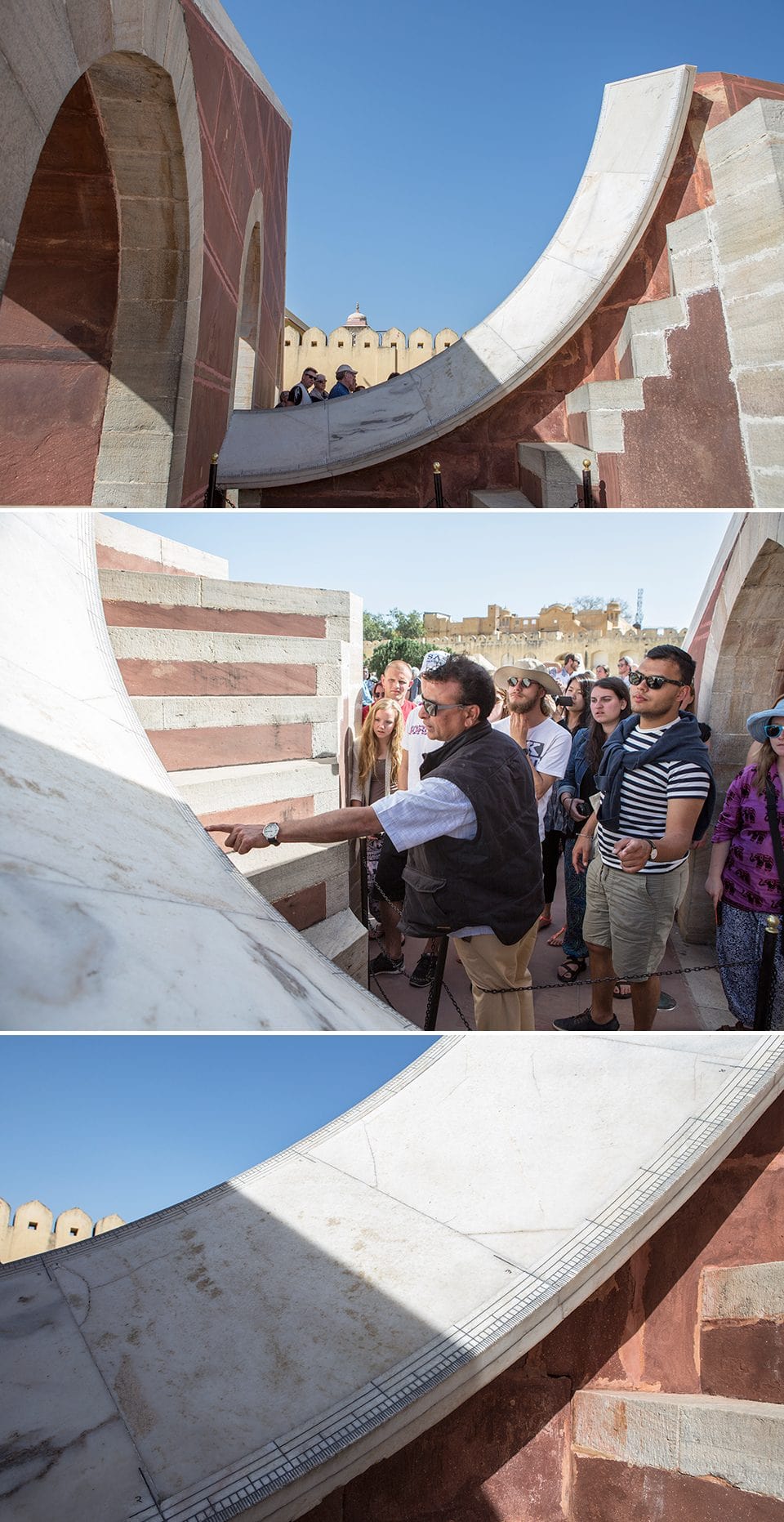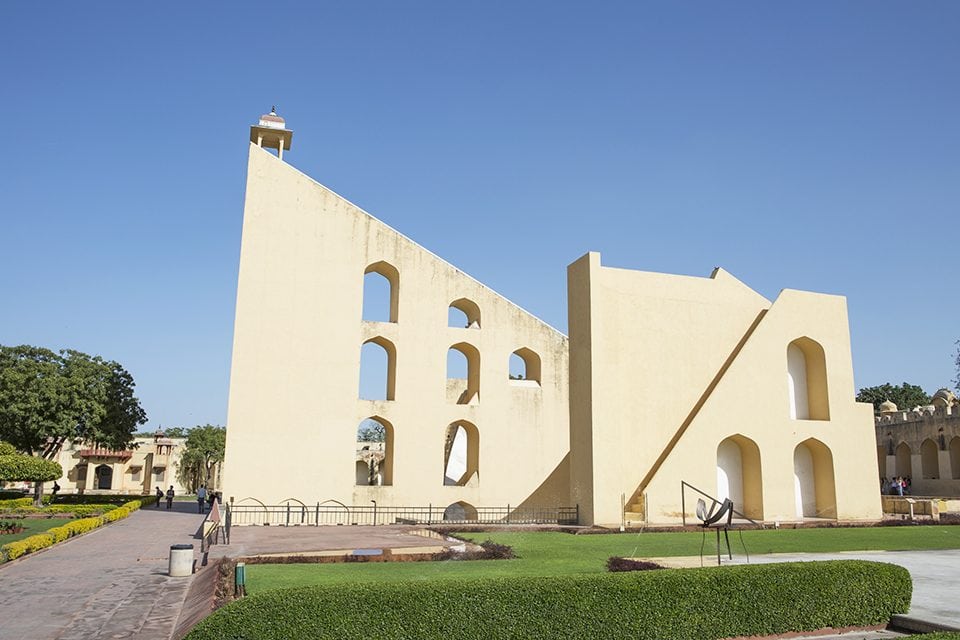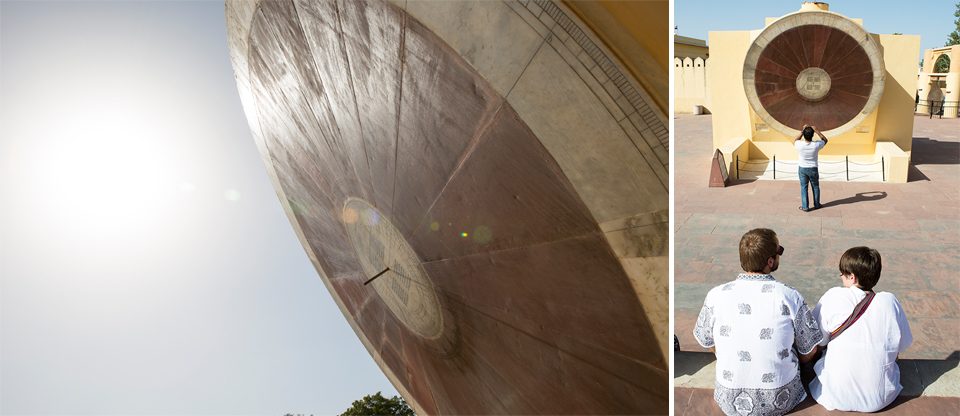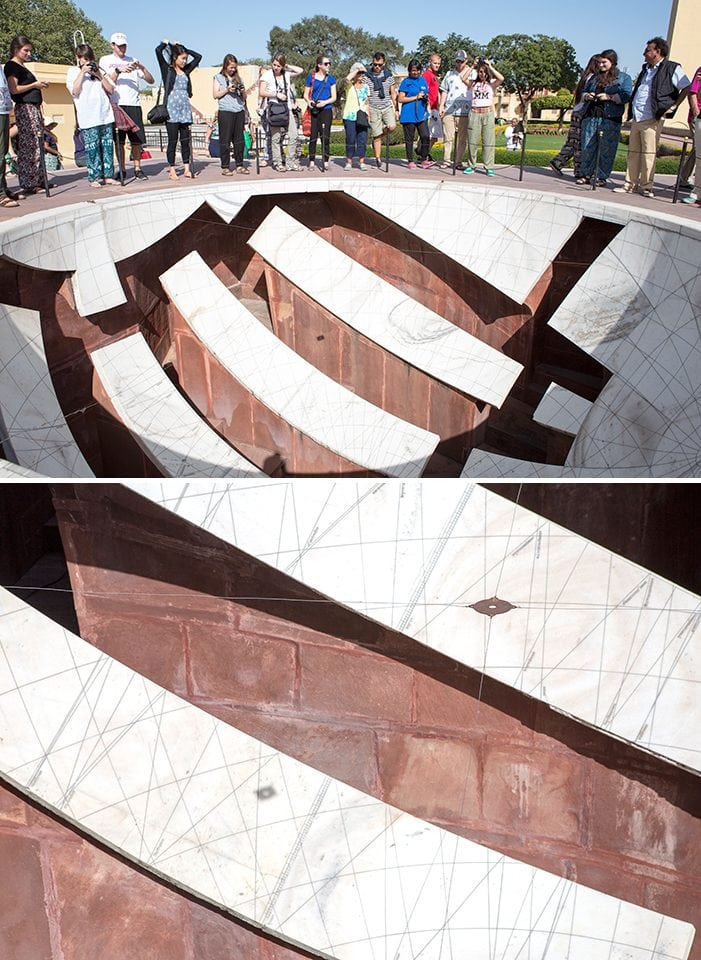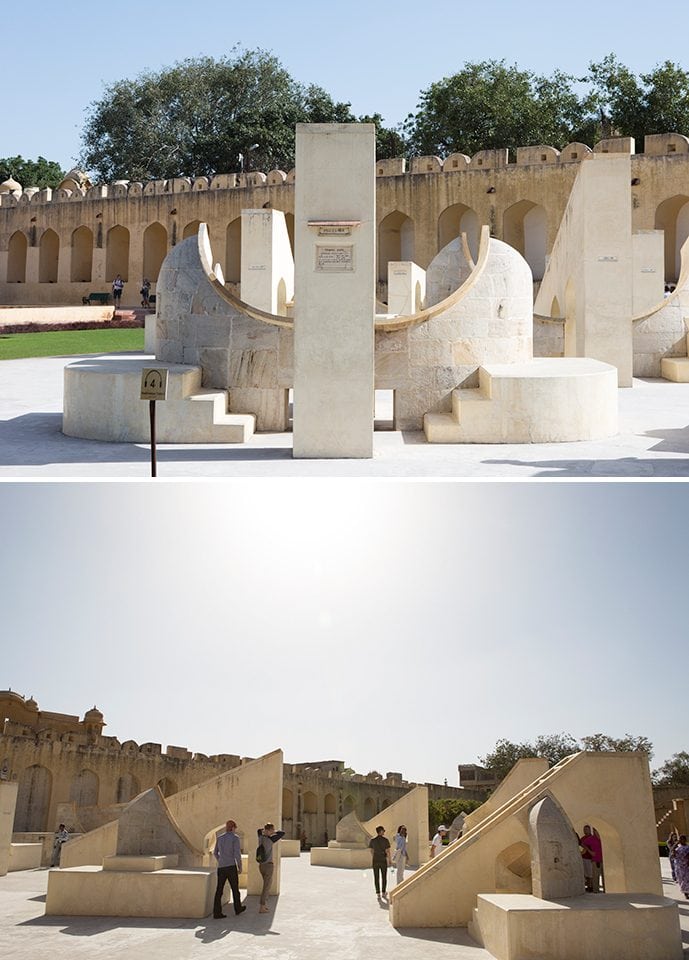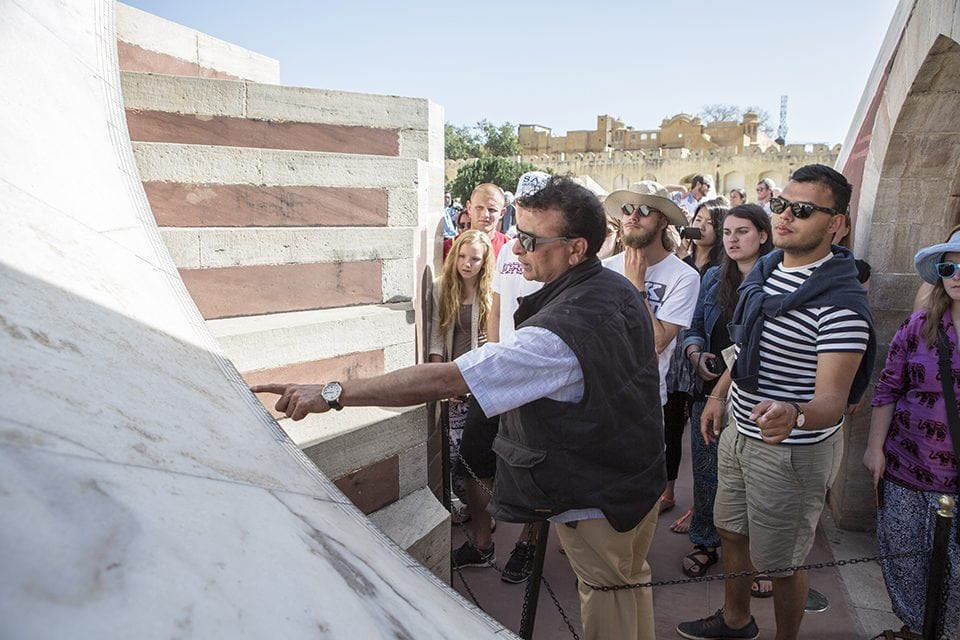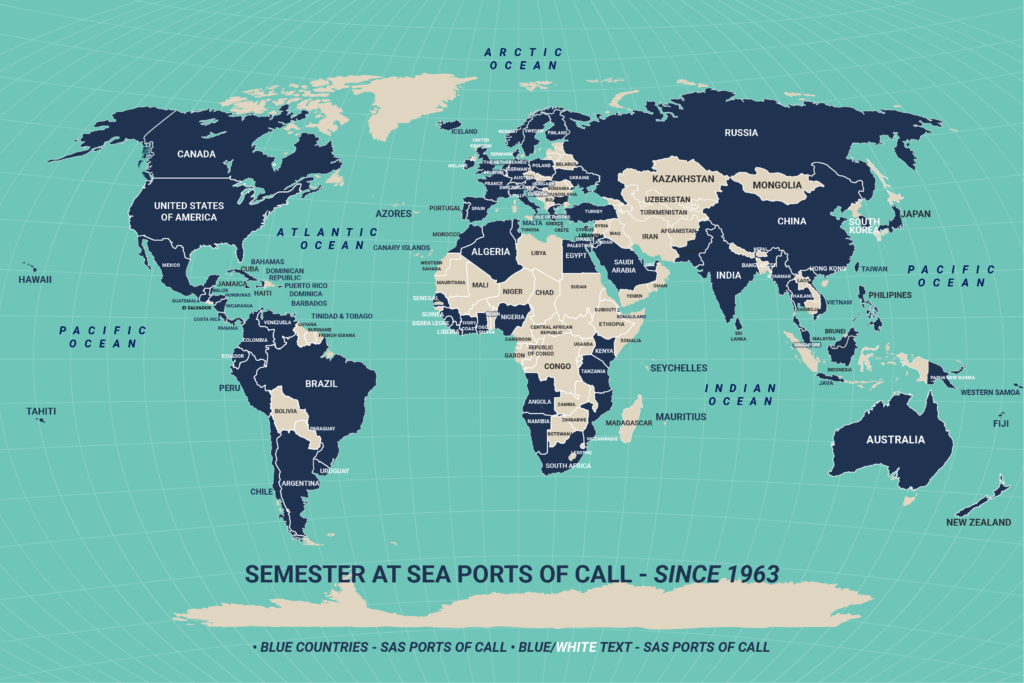In the 1720’s, Maharaja Jai Singh II moved the capital of Rajasthan to Jaipur. He wanted to make sure however, that his new capital would have sufficient instruments to measure time and determine astrological signs. He sent his team of scientists and astronomers throughout Europe to learn how to improve the common sundial, and when they returned, the Jantar Mantar (translated to calculation instrument) was constructed. The observatory has withstood the test of time and is still so accurate that it is still used for teaching and making calculations.
